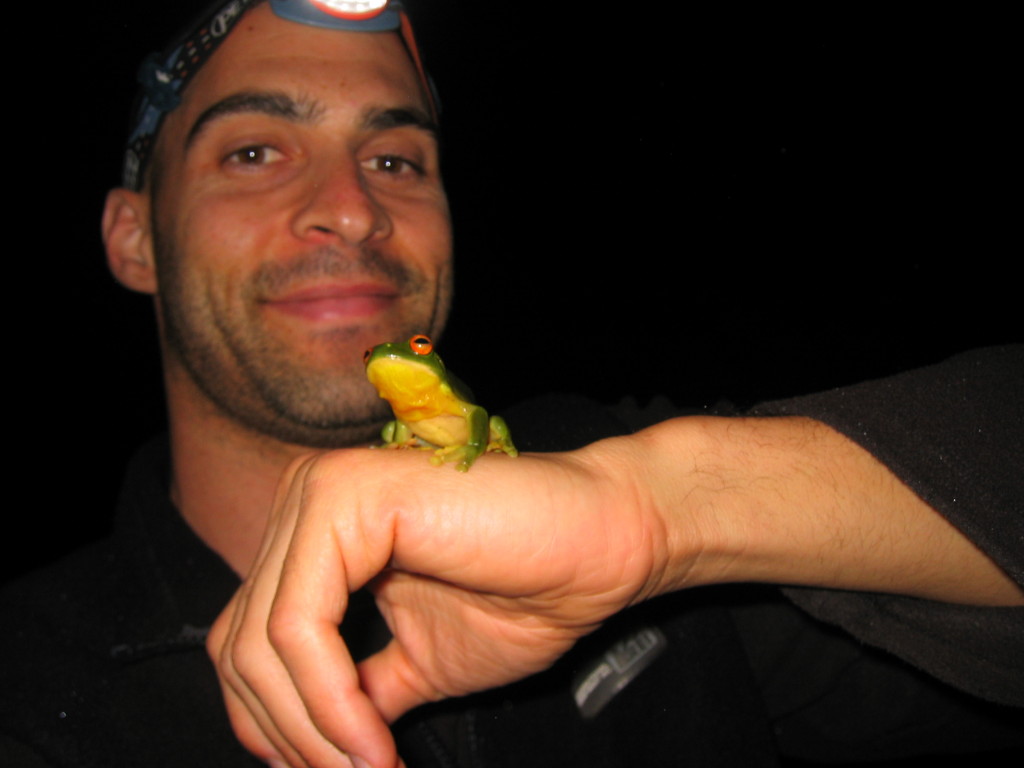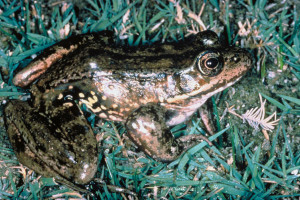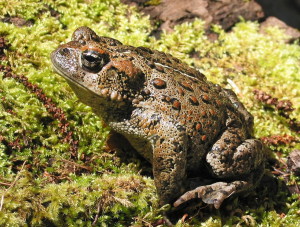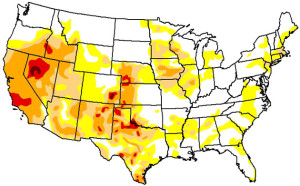In 2008, Kerry Kriger founded Santa Cruz-based Save the Frogs, which he says is the nation’s only public charity dedicated exclusively to amphibian conservation. An ardent traveler and musician, Kriger has a bachelor’s degree in mechanical engineering and a doctorate in environmental science.
PE: Why are frogs important to you?
KK: I spent a lot of time with frogs during my Ph.D. research in eastern Australia. I went all through the rain forest, looking for frogs. I think frogs are awesome, but I found out frogs were rapidly disappearing, and not a lot was getting done to help them. There are also lots of reasons frogs are important to humans and the planet. They are an integral part of the food web; they’re food for fish, snakes, dragonflies. Lots of animals depend on them. Frogs do us a favor by eating mosquitoes and ticks. Frogs are bioindicators, which means that if they are having problems then something is wrong in the environment. Conversely, if we are able to keep frogs safe then we must be doing something right. Right now they’re telling us we’re doing something wrong and need to take action.
PE: What is your favorite Bay Area frog species, and why?
KK: My favorite around here is the California red-legged frog. They are in most need of our help. They also bear our state’s name, and I’m a big fan of California. They have a century-long history of persecution: They were almost eaten to extinction by the forty-niners. These days they are eaten by the invasive American bullfrogs that we import by the millions for frog legs, pets, dissections, and jumping contests. The “Celebrated Jumping Frog of Calaveras County” made famous by Mark Twain used to be a California red-legged frog but now in those contests, it’s usually a nonnative American bullfrog. San Francisco illegally drains wetlands at Sharp Park golf course in Pacifica and kills federally protected California red-legged frogs in the process. [Editor: San Francisco–based Wild Equity Institute (wildequity.org) has sued the city over illegal take (harming or killing a protected species) by stranding red-legged frog egg masses during pumping of ponds at the golf course. The city has disputed the charges.] The Board of Supervisors voted three times to turn the land over to the National Park Service, but that was vetoed by Mayor Ed Lee.
PE: Why are frogs so sensitive to changes in the environment?
KK: They have permeable skin. They drink and breathe through their skin, so they can absorb pollution and pesticides through their skin. They’re amphibious, so if anything goes wrong with either the land or the water they can have trouble. Because they live in the water they’re very susceptible to waterborne diseases, which can spread quickly. Many of them are susceptible to chytrid fungus [a particularly deadly infection], especially in the Sierra Nevada.
PE: How likely is it that frogs will disappear?
KK: Not likely — if people take action to help save them. Our web page lists many ways to help, including simple things like slowing down when driving on wet nights. If we assume every car owner on the planet might run over one frog per year, that would be 700 million killed annually. So a few more careful drivers would make a big difference. Don’t eat frog legs. America is the third-largest importer, and San Francisco is the frog-leg-eating capital of the Western Hemisphere. California imports about three million nonnative live bullfrogs each year. The vast majority go to San Francisco for food. Frogs are not just served in French cuisine, but also Asian cuisines, roadhouse cooking, and Tex-Mex. We’re pleased that we got Restaurant Gary Danko to stop serving wild-caught Florida pig frogs.
PE: Why did you decide to start a nonprofit advocacy group rather than pursue a career in field science or academics?
KK: I realized that not much was being done to educate the public about amphibian extinctions. Educating people is the key to long-term success. There wasn’t any nonprofit group to protect amphibians, no one getting legislation to protect frogs or to purchase habitat. I thought that getting some of those things taken care of would be the most valuable thing I could do for amphibian conservation.
PE: How did Save the Frogs Day come about?
KK: I started it in 2009 because I thought it would probably be a lot easier to get teachers involved in encouraging students to save frogs if there were an official Save the Frogs day. It’s also a way to get politicians educated. We have gotten Save The Frogs Day officially recognized by the governors of North Carolina, South Carolina, and Virginia. We’re working on getting Governor Jerry Brown to recognize the fifth annual Save The Frogs Day (April 27, 2013). This year, our goal is to have 300 educational events in 50 countries, so we encourage all schools and environmental groups to take part.
PE: What is the coolest amphibian species you have ever seen?
KK: My favorite is the southern orange-eyed tree frog. It is one of the main frogs I studied during my PhD research. They’ve got a cool call and they live on the sides of cliffs by waterfalls. They come out when it’s pouring rain. They’ve got really amazing eyes and a lot of personality.
PE: Where are some good places in the Bay Area for people to see native frogs?
KK: You can go out to Mori Point next to Sharp Park to see California red-legged frogs. In the Marin Headlands, some of those ponds have Pacific chorus frogs. Sunol Wilderness in the East Bay has maybe five different species of frogs, toads, salamanders, and newts.
>> Learn how the California Red-Legged Frog became the official state amphibian.
>> Visit Save The Frogs’ website, learn about their new Education Center, and find out how to get involved.




